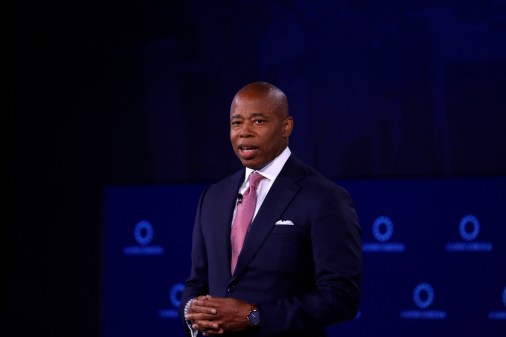New York commission approves LinkNYC Wi-Fi project
The New York City Franchise and Concession Review Committee officially approved the proposal to turn the city’s pay phones into wireless Internet hotspots with a unanimous vote on Wednesday in the last hurdle needed to get the project underway.
The $200 million project, called LinkNYC, would install up to 10,000 digital kiosks over the next 12 to 15 years, providing Wi-Fi at speeds ranging from 100 megabits per second to 1 gigabit per second.
The kiosks, which will also offer free domestic, 911 and 311 calls, are to be supported by advertising and generate at least $500 million in revenue for New York, according to city estimates.
“Today marks a significant step forward in this administration’s efforts to bridge the digital divide,” New York Mayor Bill de Blasio said in a statement. “With the approval of our LinkNYC proposal to expand free, high-speed Internet access to New Yorkers across the five boroughs, we will not only transform outdated payphone infrastructure into cutting-edge Wi-Fi hotspots, but dramatically increase fast broadband reach in more neighborhoods citywide.”
Several hours before the commission’s vote Wednesday morning, 19 tenant association presidents from New York City Housing Authority developments co-signed a letter stressing the benefits LinkNYC would bring to their communities and urging their borough presidents to help enact the proposal.
The belief is that the project will help bridge the digital divide that exists in the city. Also, the city’s larger economy ultimately could benefit from a more connected populace, advocates believe.
“Equipping our neighborhood streets with fast, free Wi-Fi, faster than even the speeds others pay for, is a simple yet key way of keeping costs down — while staying connected on the go,” the presidents wrote. “Some might take for granted being plugged-in on their morning commute, on their way to school, or just walking down the street. But for others, it’s their only chance to connect. And families can save valuable costs by making free telephone calls at the kiosks, too; bringing families together and bringing that extra money back in their pockets.”
The new network would be 100 times as fast as the average municipal Wi-Fi system, according to the city’s Department of Information Technology & Telecommunications. As part of the plan, the city hopes to put in 10,000 kiosks throughout the city. Currently, there are 8,400 pay phones.
The kiosks will support as many as 250 devices within a range of 150 feet, officials said.
While the project has been met with enthusiasm as a potential game-changer for large cities, there are possible pitfalls of the project. Of note, during Hurricane Sandy, the city’s pay phone network was unaffected by the storms and remained the primary communication tool for city residents during times when cell phone and Internet networks were unavailable.






